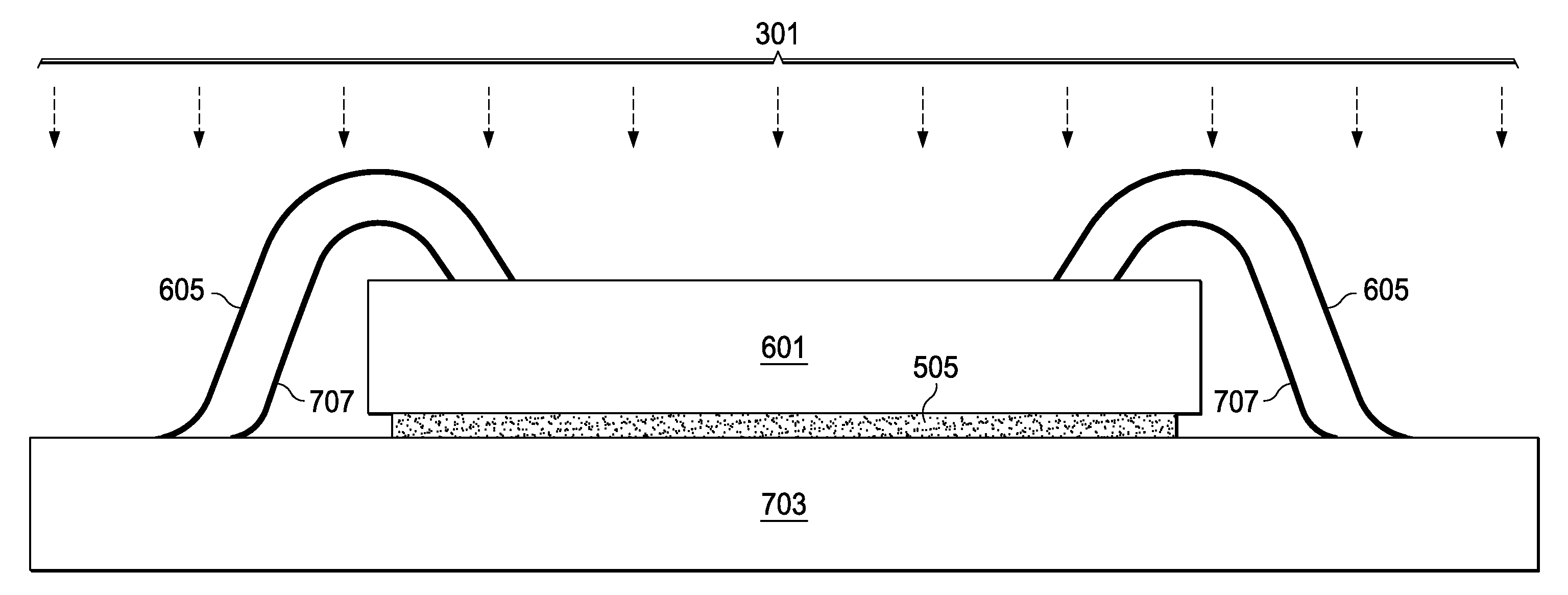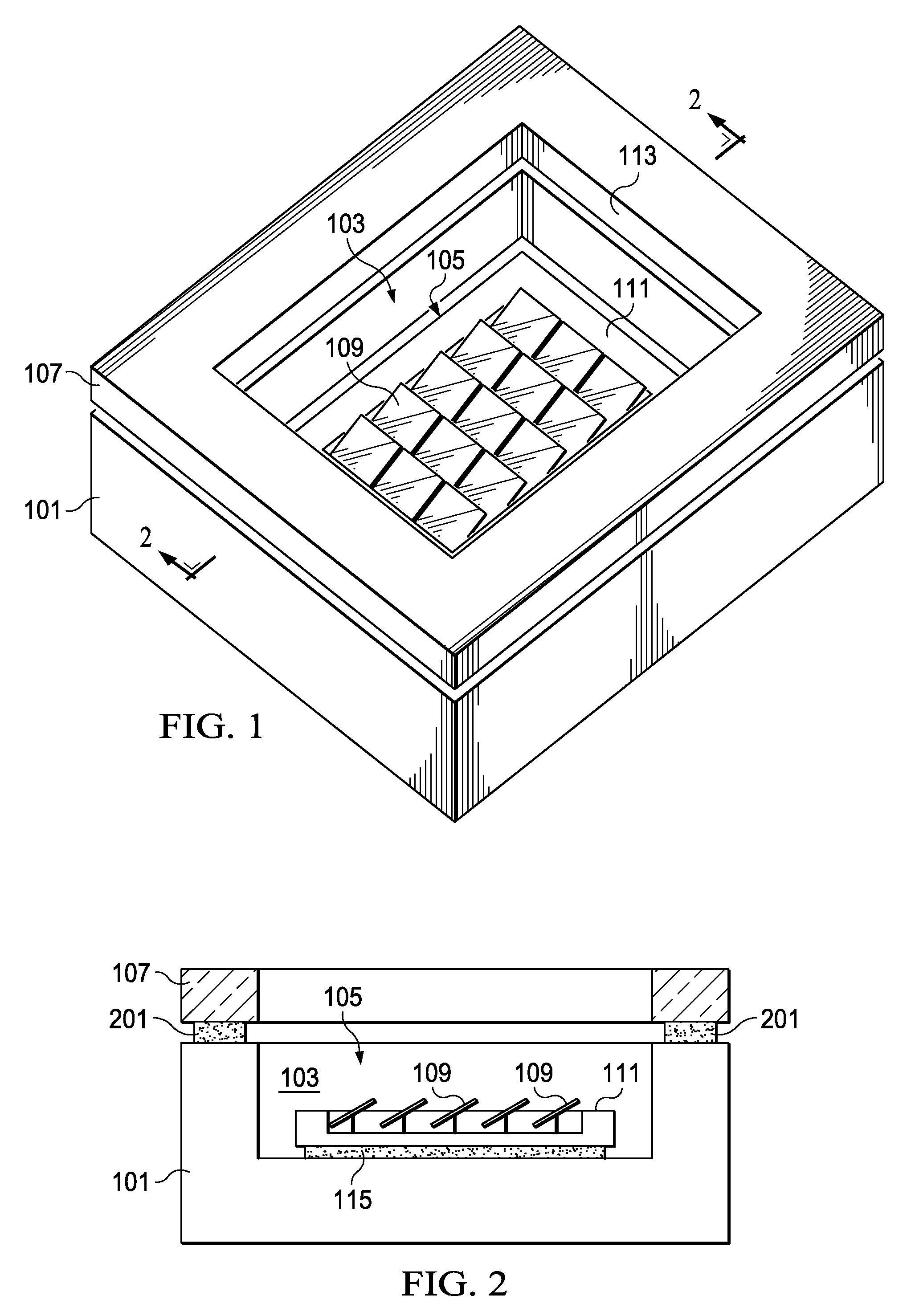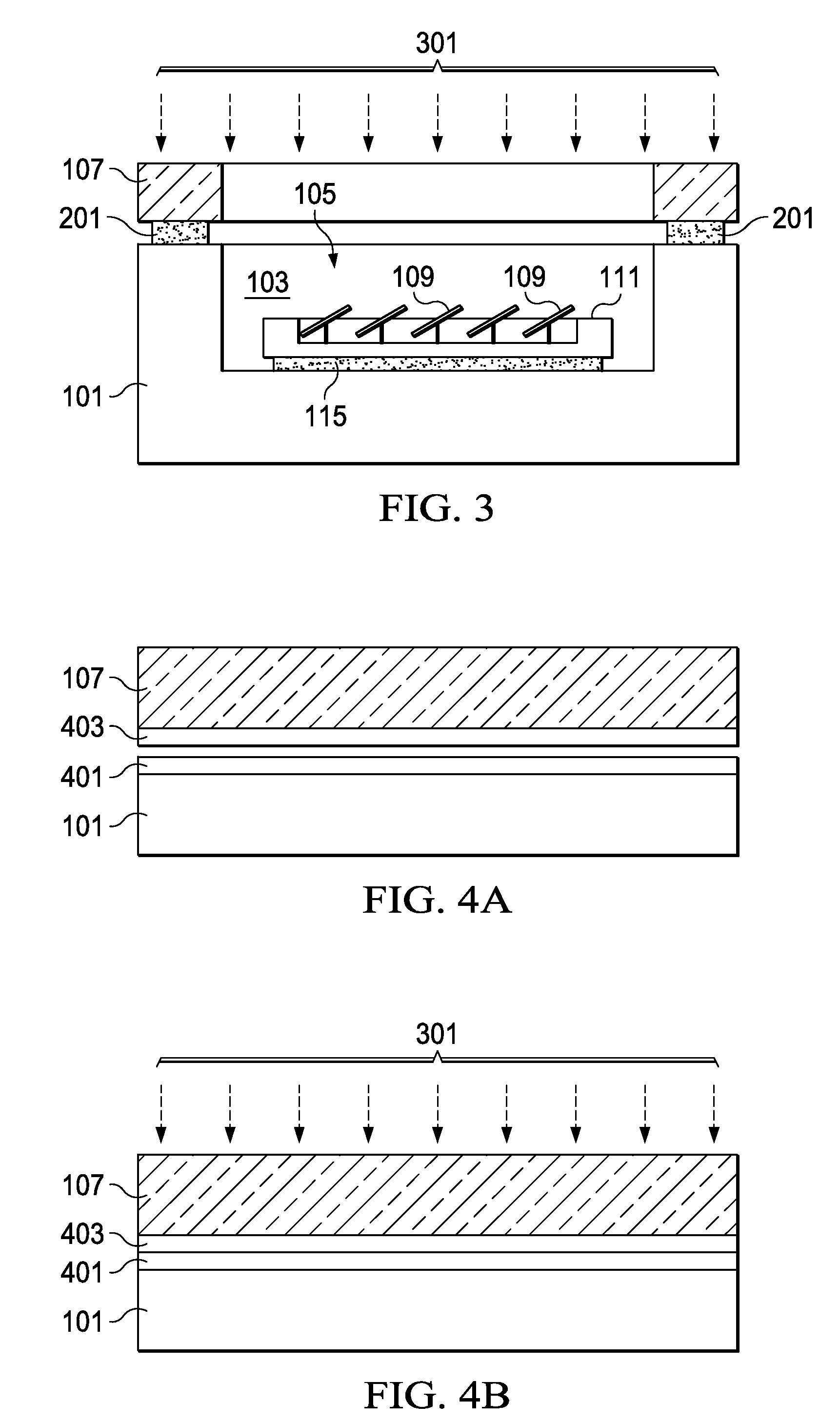Microwave Cure of Semiconductor Devices
a technology of semiconductor devices and curing methods, which is applied in the manufacture of microstructural devices, semiconductor devices, electrical devices, etc., can solve the problems of many problems in the curing process, the device is damaged, and the entire structure is heated, so as to reduce the number of defects, reduce stress, and reduce the effect of curing speed
- Summary
- Abstract
- Description
- Claims
- Application Information
AI Technical Summary
Benefits of technology
Problems solved by technology
Method used
Image
Examples
Embodiment Construction
[0021]The making and using of the presently preferred embodiments are discussed in detail below. It should be appreciated, however, that the present invention provides many applicable inventive concepts that can be embodied in a wide variety of specific contexts. The specific embodiments discussed are merely illustrative of specific ways to make and use the invention, and do not limit the scope of the invention.
[0022]The present invention will be described with respect to preferred embodiments in a specific context, namely a MEMs device sealed within a cavity of a substrate by a cover with an adhesive that has been cured. The invention may also be applied, however, to adhesives and encapsulants in other situations where curing is desired.
[0023]With reference now to FIG. 1, there is shown a substrate 101 with a MEMs device 105 located within a cavity 103 of the substrate 101 and enclosed by a cover 107. In a preferred embodiment, the MEMs device 105 is a digital micromirror device (D...
PUM
 Login to View More
Login to View More Abstract
Description
Claims
Application Information
 Login to View More
Login to View More - R&D
- Intellectual Property
- Life Sciences
- Materials
- Tech Scout
- Unparalleled Data Quality
- Higher Quality Content
- 60% Fewer Hallucinations
Browse by: Latest US Patents, China's latest patents, Technical Efficacy Thesaurus, Application Domain, Technology Topic, Popular Technical Reports.
© 2025 PatSnap. All rights reserved.Legal|Privacy policy|Modern Slavery Act Transparency Statement|Sitemap|About US| Contact US: help@patsnap.com



